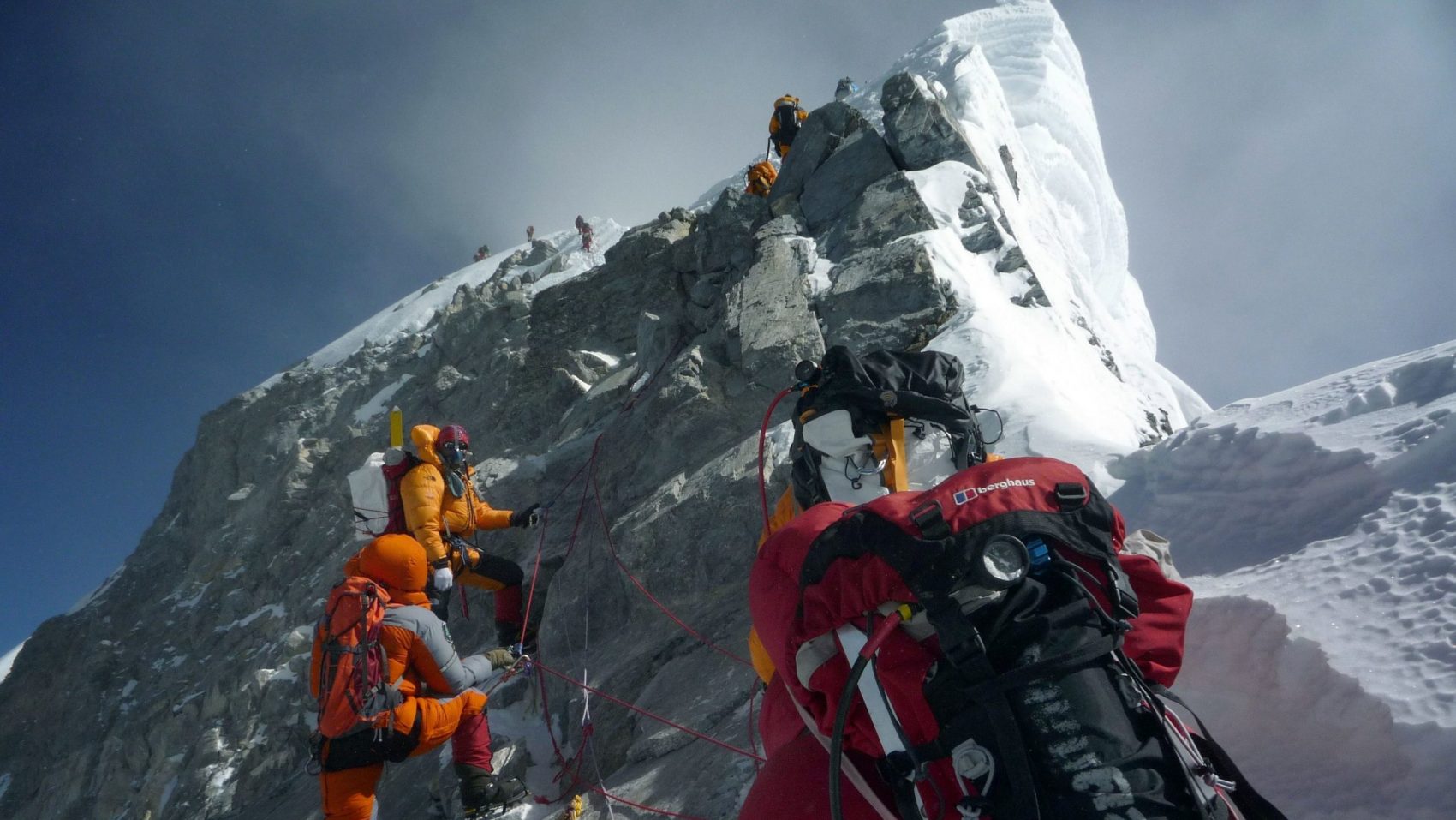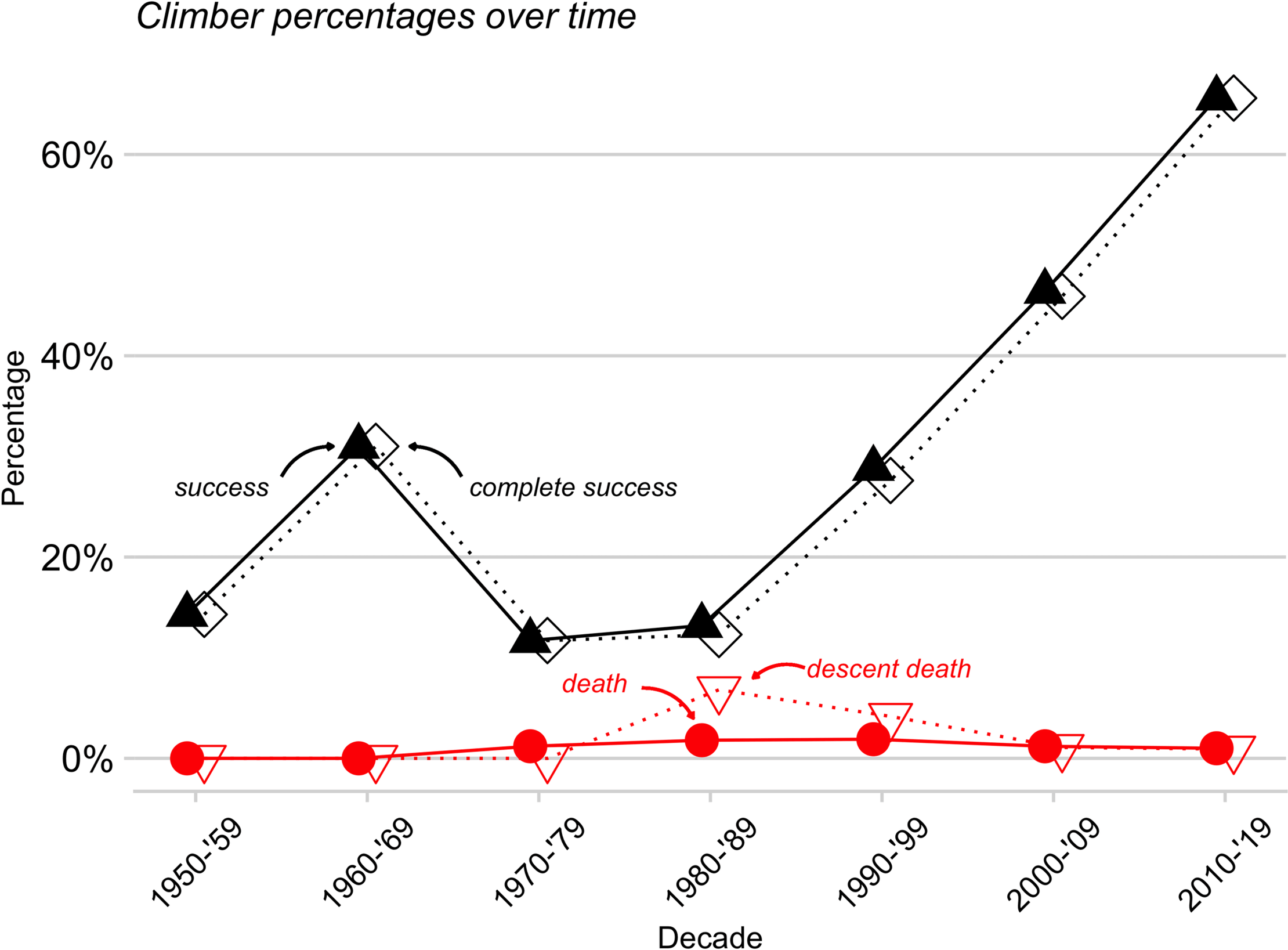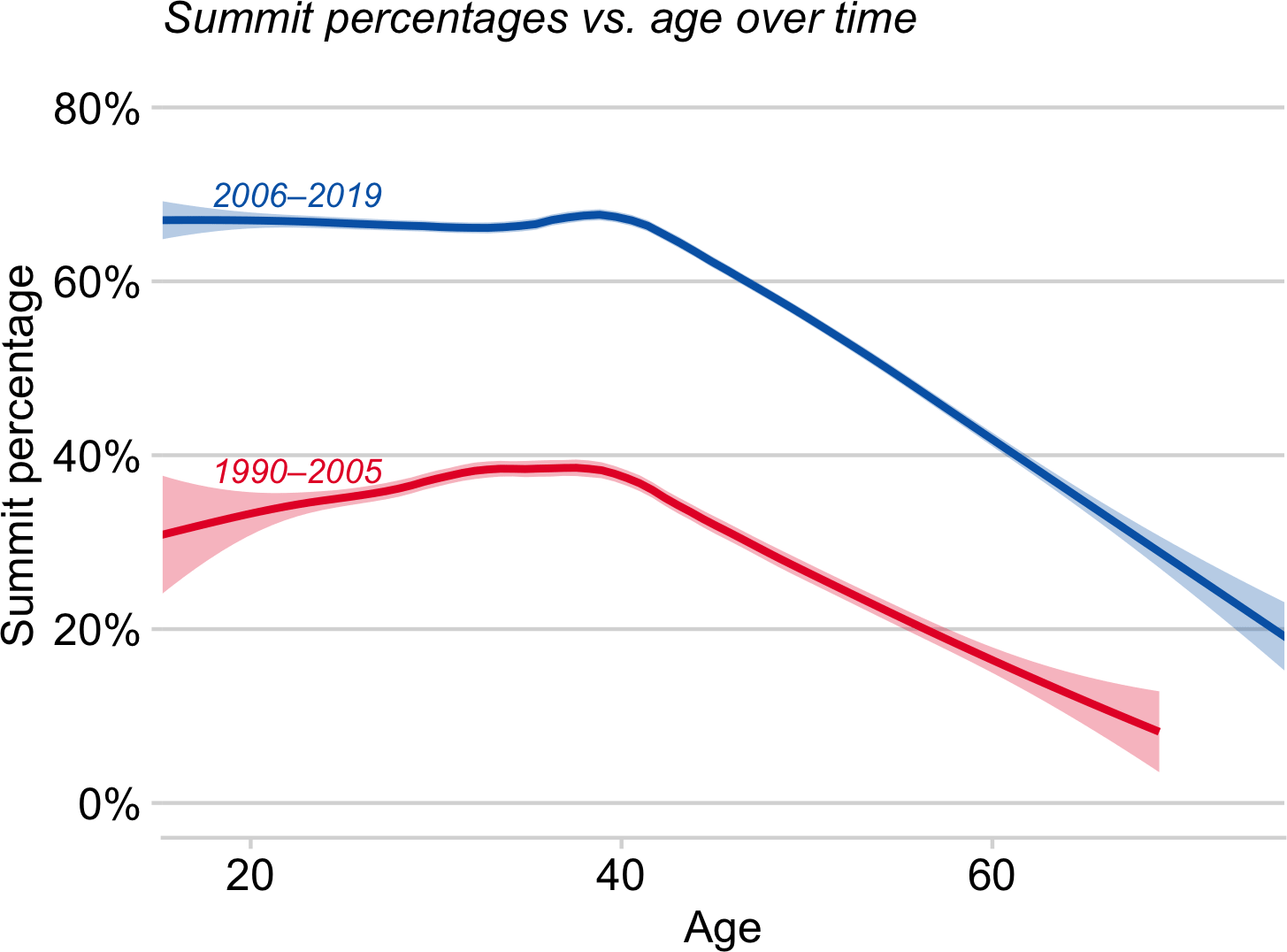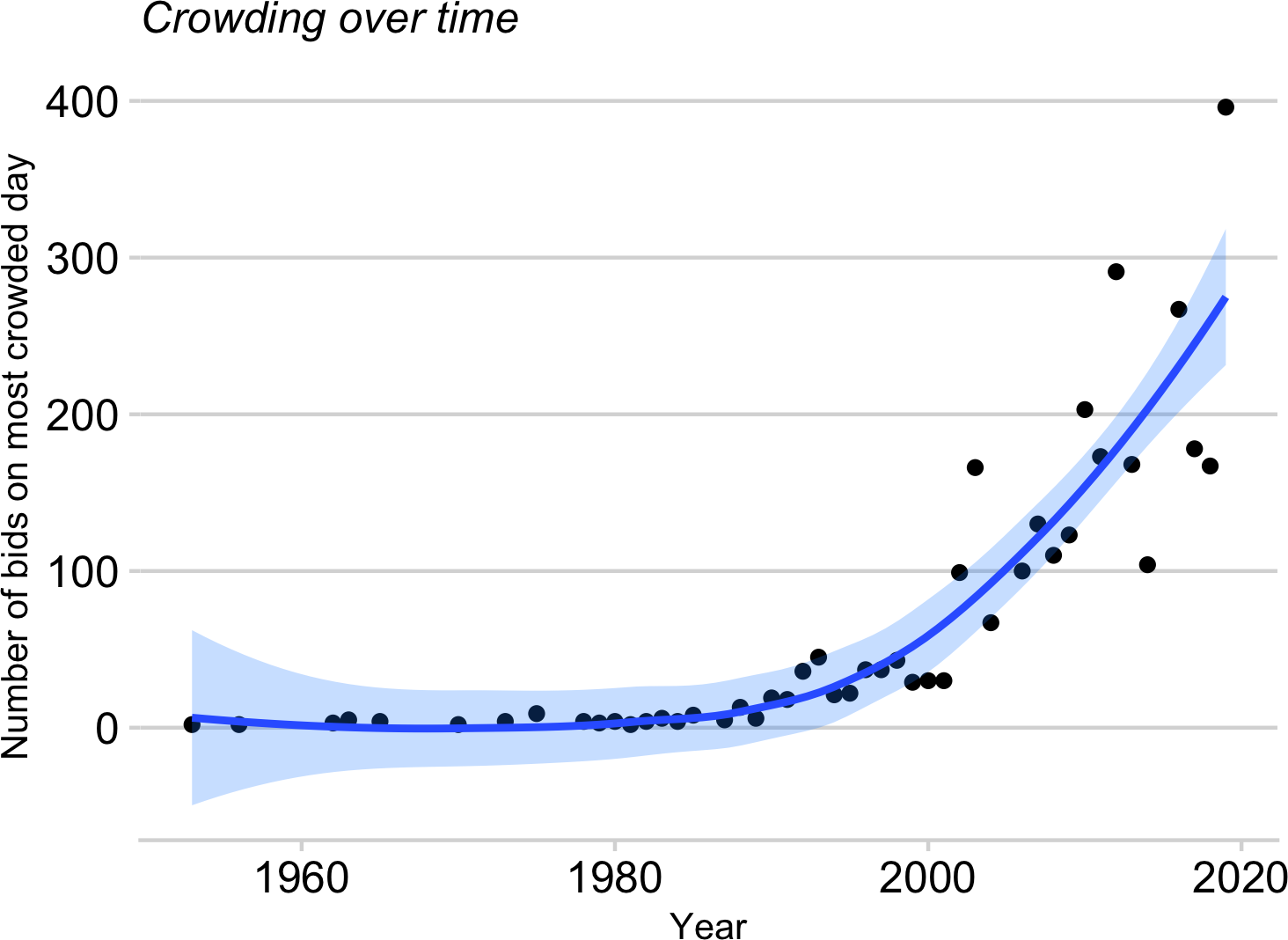
A new study looking at the success and death rates on Mount Everest reveals interesting facts about the mountaineers who climb it. Some of their findings are not surprising, such as a decreased death rate due to better gear and weather forecasting. Check out the list below, are there any that you wouldn’t expect?
10 Facts About Climbing Mount Everest
Originally compiled by Mark Horrell
- Mount Everest is becoming safer: From 2006-2019 the death rate was 1%, down from 1.6% from 1990-2005
- Reaching the summit is more likely: While just under a third of all climbers summited from 1990-2005, just over two-thirds summited from 2006-2019

The overall success rate of climbers summiting has skyrocketed in recent decades. Photo: Plos One - Overcrowding has significantly increased: Yes, Everest is getting much more crowded. On the busiest day in May 2019, a mind-boggling 396 people attempted to summit the mountain.
- Overcrowding does not have a significant effect on success or death rates: Overcrowding leads to long lines of people all attempting to summit. There have been reports of people running out of oxygen as they wait in a line to reach the top. However, data now suggests that too many people on the mountain have not led to a higher death rate on those days.
- Women are more likely to reach the summit and less likely to die: From 2006-2019 68.2% of women summited vs 64.4% of men. During the same period, 0.5% of women lost their lives vs 1.1% of men.
- The success rate of reaching the summit plummets after age 40: If you are going to attempt to conquer Mount Everest it is best to do it when you are young. After age 40 the likelihood of death increases by 1.1% per year.
The success rate plummets when people are older than 40. Photo: Plos One - The older you are, the more likely you are to die: Although overall death rates have been dropping, the older you are means you have less of a chance of surviving. If you are over the age of 59 there is a 4.1% chance of dying, which is much higher than the overall rate of 1%.
- Previous experience at high altitudes counts for something: According to the study, people who had experience at extreme elevations are more likely to have a successful summit attempt than those without. From 1990-2005 those rates were 40.9% success with previous experience vs 28.1% success without. From 2006-2019 those rates were 67.6% vs 61.5% respectively.
- Mountaineering experience matters less than it used to: With guided trips, sherpas to carry your gear, and modern equipment overall experience matters much less than it used to.
- Success is more likely from the south side than the north side of the mountain: The north side of Everest is a harder climb, camps are higher, and it has harsher weather conditions. Overall 65.8% of attempts are successful from the south side vs 58.4% from the north.
The fact of the matter is that more people want to climb the tallest mountain in the world. In recent years the surge of people who attempt the summit has topped several hundred on the busiest days. Photo: Plos One



Con un tatuaggio sul sedere dГ la testa a un cazzo enorme.CTG zia asino fermo catturato da dietro. http://datingfr.xyz/Mirko_olivieri.html Mirko olivieri. luciana transbike sharing lecce. Liv Revamped e Simone Garza condividono un giocattolo.Studentessa troia acconsente e scopa il suo vecchio insegnante.Procace ragazza amatoriale tirando fidanzato. Amicizie nuovi incontri eventi e gite per single caserta.
http://datefresh.xyz/wichsen_in_heiГџer_dusche_warmer_schwanz_kendogs_schwanz.html
http://datefresh.xyz/Intelligenter_und_gutaussehender_philippinischer_schwuler_Sex_xxx_Aaron_James_und_Tommy.html
http://datefresh.xyz/Homosexuell_auf_Homosexuell_Bareback_Fuck_und_Heavy_Jizzload.html
http://datefresh.xyz/Ziehende_Bolzen_die_während_einer_Party_Hahn_lutschen.html
http://datefresh.xyz/Extrem_haarige_Kerle_reife_Männer_Homosexuell_Porno_Tube_und_Jungen_heißen_Sex.html